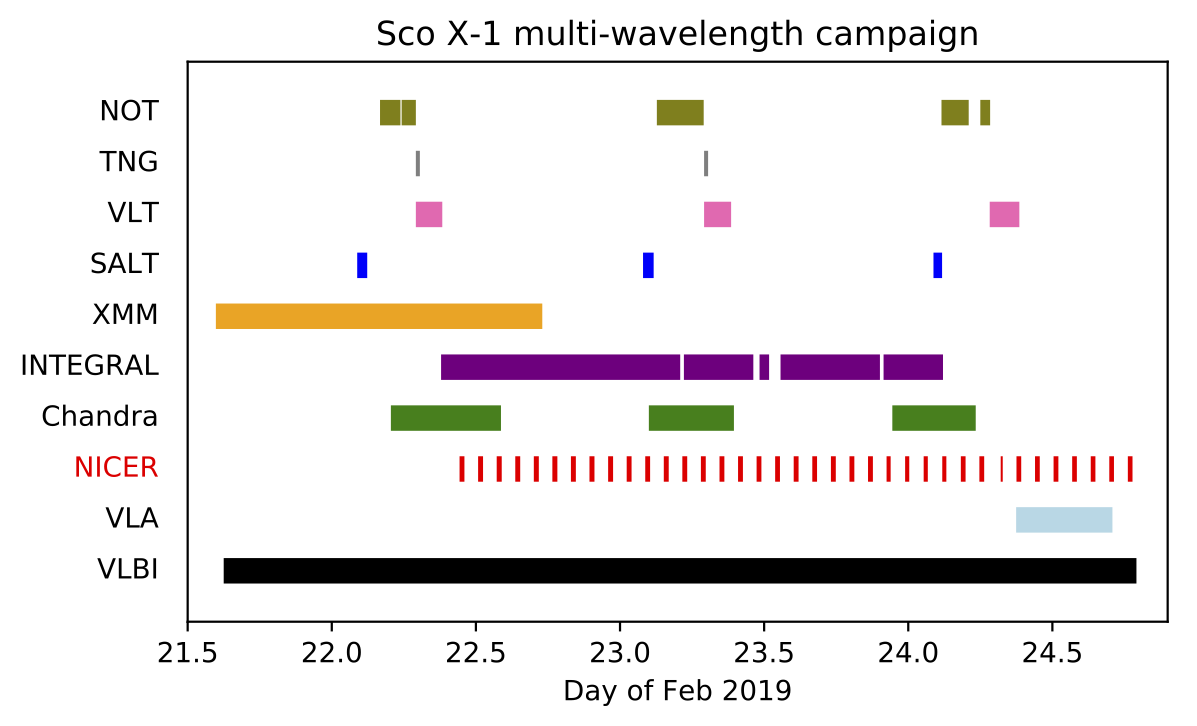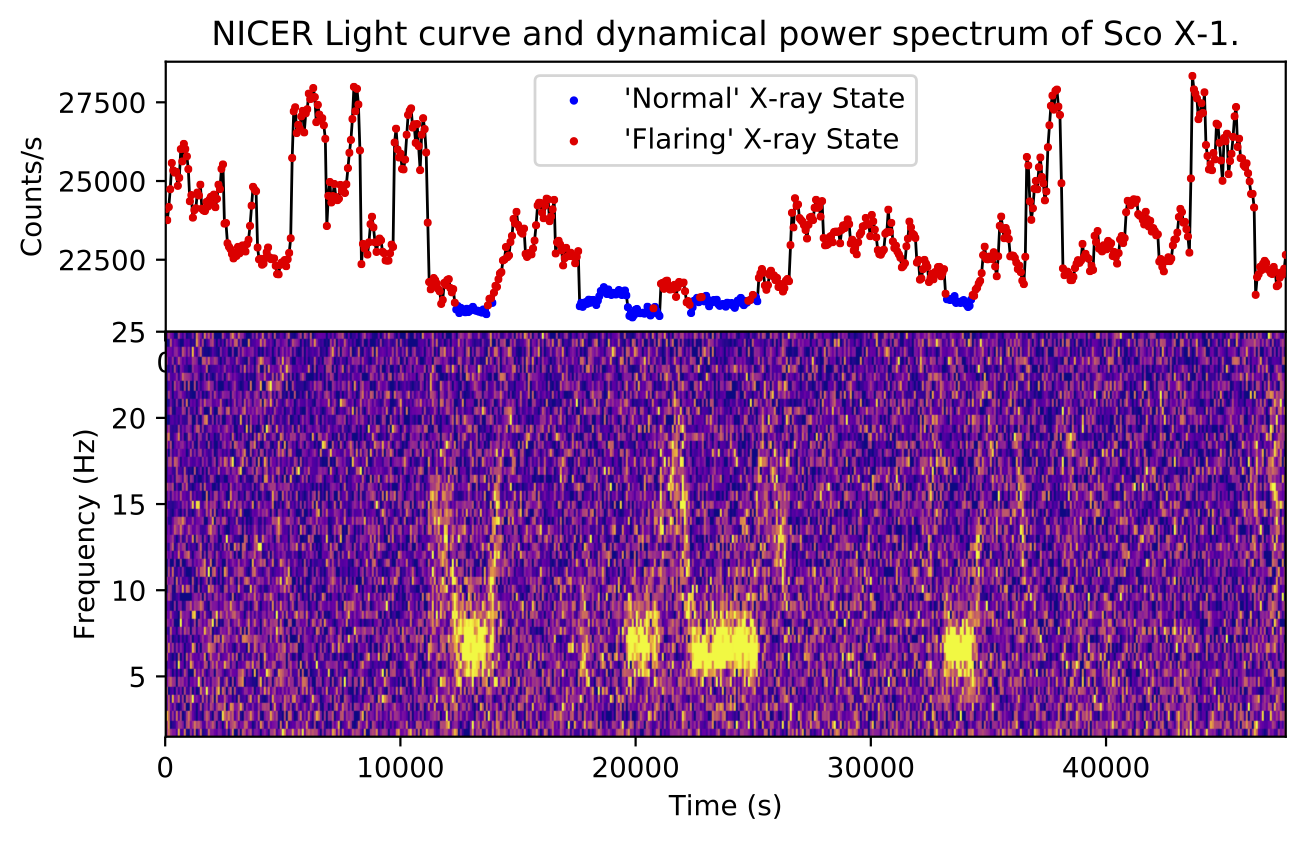NICER / ISS Science Nugget for March 7, 2019NICER takes part in a large multiwavelength campaign on Sco X-1Scorpius X-1 is the brightest extra-solar source in the X-ray sky. Its discovery, in 1962, was awarded with the 2002 Nobel Prize in Physics. The X-rays from Sco X-1 are the result of accretion processes, in which gas from the low-mass companion star falls onto the more massive neutron star. As is common, these accretion processes are accompanied by the launch of jets, i.e. highly energetic, collimated outflows of matter, which can be studied in the radio band. Due to its relative proximity, the jets in Sco X-1 can be observed in greater detail than in many other accreting neutron stars (or stellar-mass black holes). Past observations revealed that Sco X-1 can show several types of jets, each with differing duty cycles and energetics. One of these types, the so-called ultra-relativistic flow, has only been observed in two other sources. In Sco X-1, this type of jet appears to be launched around the time of a transition from a 'normal' X-ray state to a 'flaring' X-ray state, when a strong 6 Hz variability signal is present in X-ray brightness. To investigate this connection in more detail, an extensive multi-wavelength campaign was organized, which took place in the last week of February. This campaign was centered around more than three days of continuous global radio interferometry observations while several X-ray instruments, including NICER, provided simultaneous coverage to trace the X-ray state of the system. An overview of the coverage provided by the various facilities involved can be seen in Figure 1.
Thanks to its large collecting area and its ability to handle the very high resulting count rates, NICER provided the highest quality data of the X-ray instruments involved. In the upper panel of Figure 2 we show the NICER X-ray light curve of Sco X-1, with time gaps removed and data colored according to X-ray state. In the lower panel a dynamical power spectrum is shown, revealing the occasional presence of strong variability around 6 Hz (bright yellow colors) and, at other times, weaker variability in the 6-20 Hz range.
The results indicate that Sco X-1 made at least four transitions from the 'normal' X-ray state to the 'flaring' X-ray state, suggesting that several launches of ultra-relativistic flows occurred during the period of the multiwavelength campaign. Processing of data from the other facilities is still underway, but the NICER observations already indicate that the overall final combined data set will likely greatly improve our understanding of jet launches in accreting compact objects. NICER
|




